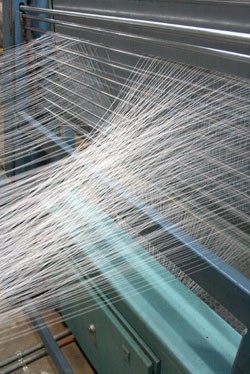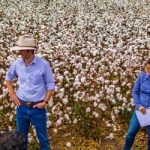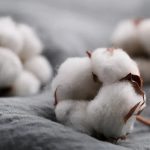The Fiber Year 2012 report (supported by Lenzing) has shown that in 2011 world fiber output increased 6.4% to a total volume of 85.9 mn tons, in which 33.2 mn tons was from natural fiber output (up 7.1%) and the other 52.7 mn tons was from man-made fiber output (up 6%). Global Industry Analysts, Inc. (GIA) has forecasted that the growth for world fiber market will be increased to a volume of 93 million tons in 2015 and 101 mn tons in 2017. In terms of fiber consumption, the report by Lenzing indicates that in 2011 the world consumption increased 2.4% to 82 mn tons or an average consumption of 11.8 kg fiber per capita.
 For cotton fiber market, it was predicted that during 2012-13 most world leading producers will decrease their cotton fiber output by 7%, remaining 113.8 million bales. In terms of fiber stock, Cotton Outlook indicates in its website that 3,617,000 tons of cotton fiber stock was found during the end of 2012. During 2013-14 cotton fiber output has been forecasted to decrease by 11% to 23.2 million tons, according to ICAC (International Cotton Advisory Committee). For fiber consumption, it is expected to see a small increase of 3% to a volume 24.2 million tons. The cotton fiber trades will be steady at 7.8 million tons during 2013-14 and the stock will be dropped by 6% from 16.6 million tons in July 2013 to 15.6 million tons in July 2014. In terms of cotton yarn trades, BusinesStat has forecasted that during 2012-16 world cotton yarn trades will grow averagely by 2.1% per year and the yarn trades will reach 15.6 million tons in 2016.
For cotton fiber market, it was predicted that during 2012-13 most world leading producers will decrease their cotton fiber output by 7%, remaining 113.8 million bales. In terms of fiber stock, Cotton Outlook indicates in its website that 3,617,000 tons of cotton fiber stock was found during the end of 2012. During 2013-14 cotton fiber output has been forecasted to decrease by 11% to 23.2 million tons, according to ICAC (International Cotton Advisory Committee). For fiber consumption, it is expected to see a small increase of 3% to a volume 24.2 million tons. The cotton fiber trades will be steady at 7.8 million tons during 2013-14 and the stock will be dropped by 6% from 16.6 million tons in July 2013 to 15.6 million tons in July 2014. In terms of cotton yarn trades, BusinesStat has forecasted that during 2012-16 world cotton yarn trades will grow averagely by 2.1% per year and the yarn trades will reach 15.6 million tons in 2016.
 Carbon fiber is presently being used for various applications such as sport equipment, computer, aerospace and cars. It was found that in 2012 the world demand for carbon fiber was at 54,500 tons and the CAGR of this fiber was 14.1% during 2008-2012. Japanese and the US are now the world two leading producers of carbon fiber while China is catching up. It produced 3,500 tons of carbon fiber in 2012.
Carbon fiber is presently being used for various applications such as sport equipment, computer, aerospace and cars. It was found that in 2012 the world demand for carbon fiber was at 54,500 tons and the CAGR of this fiber was 14.1% during 2008-2012. Japanese and the US are now the world two leading producers of carbon fiber while China is catching up. It produced 3,500 tons of carbon fiber in 2012.
Recently the world leading journal “Nature” has announced a success on decoding the simplest cotton genome, Gossypium raimondii. This finding was taken place with the collaborative effort of 31 institutes from around the world. The researchers are hoping to offer benefits for cotton growers, consumers, and scientists through the application of the cotton genomic blueprint they have found.
Viscose fiber is known to be an excellent water-absorbing fiber until Kelheim Fibers has developed Olea, the first viscose fiber featuring water repellent property. Due to incorporation of the additive (made of hydrophobic and renewable materials) during fiber spinning, the water repellent property in Olea fiber is durable. It is being used for the cover- and back-sheets of hygiene products.
Verdezyne Inc., corroboration with Universal Fiber Inc., and Premiere Fibers Inc., is producing biobased adipic acid for using in nylon 6,6 production. This adipic acid is derived from nonfood-based vegetable oils using a reasonable-cost engineered yeast-based fermentation process. Verdezyne is planning to offer its biobased adipic acid for other uses.
Researchers from IIT Delhi have developed nanocomposite fibers providing various properties such as self-cleaning, superior in toughness, strength, thermal resistant, electrical conductivity, and dyeability. These nanocomposite fibers are made through the addition of nanoparticles (nanoclays, carbon nanotubes, nanotitania, and nanosilica) into the polymer matrix (polypropylene, nylon, polyurethane) during fiber formation.





